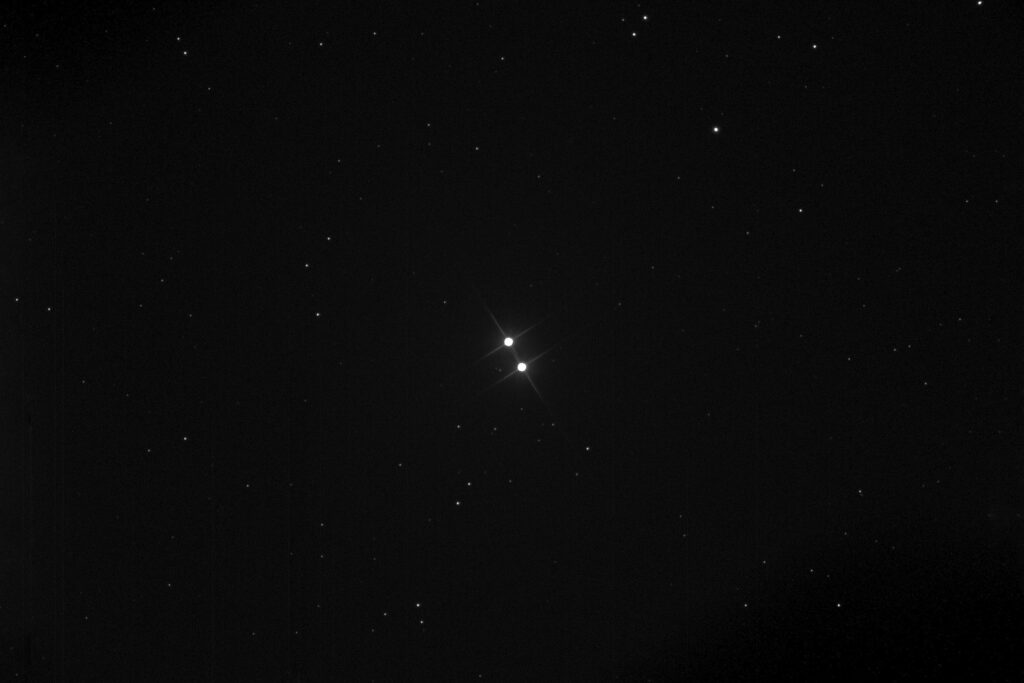Nu Draconis is one of the finest examples of a "double star" in the heavens. Double stars are two stars that are gravitationally linked, orbiting about a common center of mass (like the Earth and Moon system). What makes Nu Draconis memorable is that it consists of two white stars of equal brightness (magnitude 4.9), with a relatively wide separation that is easily resolved in binoculars.
The system has a measured distance of 100 light years, and at that distance the pair's angular separation of 61 arc minutes yields a true separation of 1,900 astronomical units (about 23 times the diameter of Pluto's orbit), and an orbital period of 44,000 Earth years. The distance between our Sun and the nearest star beyond or solar system is 125 times greater than the distance separating the two components of Nu Draconis.
Nu Draconis
Date Taken:September 3, 2010
Location Taken: Conditions of Location:FWHM 2.41
Equipment Used:14.5" Ritchey-Chretien telescope, SBIG STL11000 CCD camera, Astrodon RGB filters, TCC, PIR, remote guide head used with Takahashi Sky90 for autoguiding, T-Point used for polar alignment (required for each imaging session due to my portable setup).
Processing Used:one 40-second luminance test image, processed in Photoshop
Distance from Location:100 light years
Constellation:Draco (the "dragon")
Other Link:

I would like to use your magnificent photo of Nu Draconis in and article I am doing on Cloudy Nights. Photo credit would, of course, be given.
Thank you,
Bill Pickard
Of course.